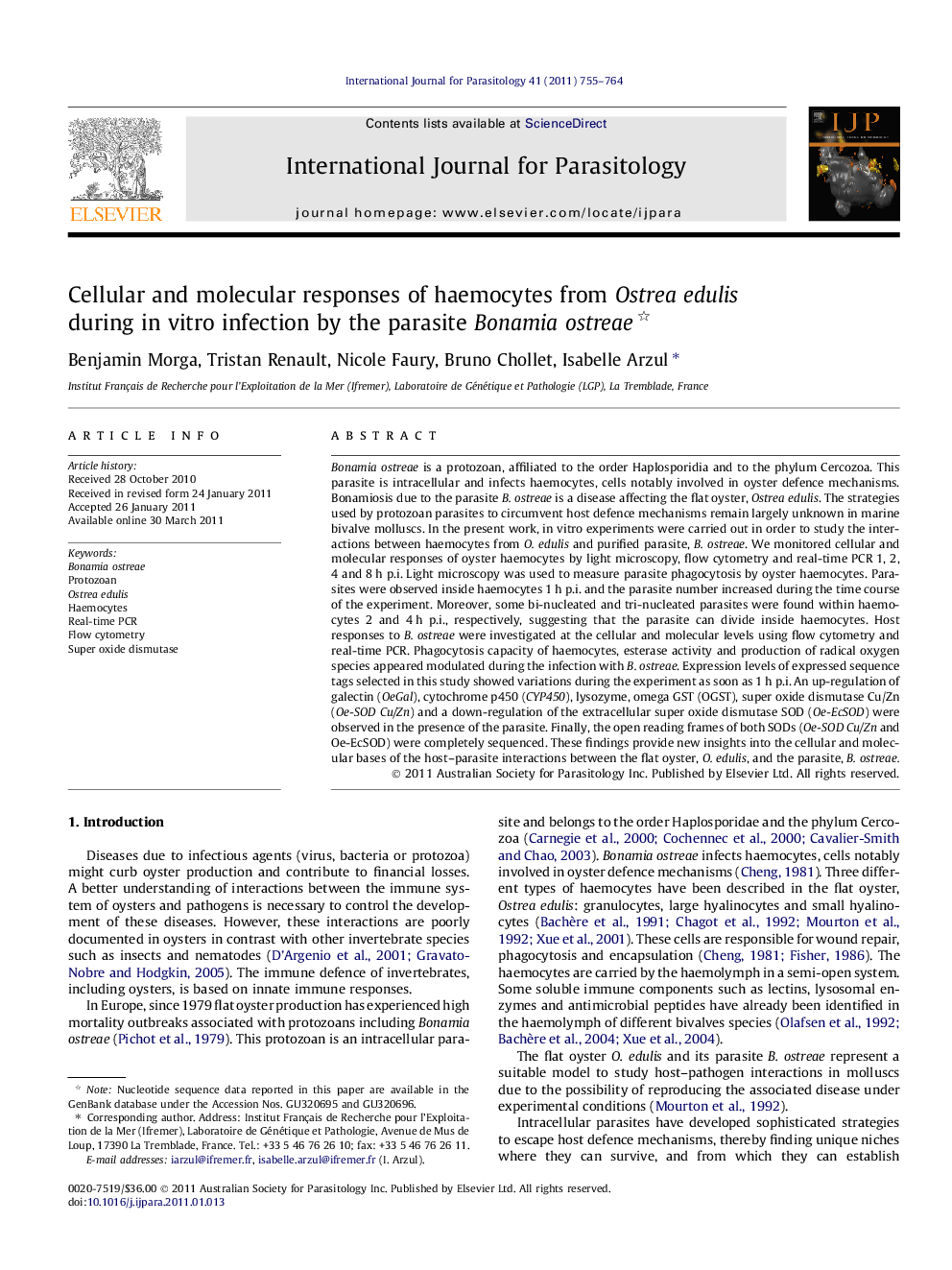| Article ID | Journal | Published Year | Pages | File Type |
|---|---|---|---|---|
| 2436240 | International Journal for Parasitology | 2011 | 10 Pages |
Bonamia ostreae is a protozoan, affiliated to the order Haplosporidia and to the phylum Cercozoa. This parasite is intracellular and infects haemocytes, cells notably involved in oyster defence mechanisms. Bonamiosis due to the parasite B. ostreae is a disease affecting the flat oyster, Ostrea edulis. The strategies used by protozoan parasites to circumvent host defence mechanisms remain largely unknown in marine bivalve molluscs. In the present work, in vitro experiments were carried out in order to study the interactions between haemocytes from O. edulis and purified parasite, B. ostreae. We monitored cellular and molecular responses of oyster haemocytes by light microscopy, flow cytometry and real-time PCR 1, 2, 4 and 8 h p.i. Light microscopy was used to measure parasite phagocytosis by oyster haemocytes. Parasites were observed inside haemocytes 1 h p.i. and the parasite number increased during the time course of the experiment. Moreover, some bi-nucleated and tri-nucleated parasites were found within haemocytes 2 and 4 h p.i., respectively, suggesting that the parasite can divide inside haemocytes. Host responses to B. ostreae were investigated at the cellular and molecular levels using flow cytometry and real-time PCR. Phagocytosis capacity of haemocytes, esterase activity and production of radical oxygen species appeared modulated during the infection with B. ostreae. Expression levels of expressed sequence tags selected in this study showed variations during the experiment as soon as 1 h p.i. An up-regulation of galectin (OeGal), cytochrome p450 (CYP450), lysozyme, omega GST (OGST), super oxide dismutase Cu/Zn (Oe-SOD Cu/Zn) and a down-regulation of the extracellular super oxide dismutase SOD (Oe-EcSOD) were observed in the presence of the parasite. Finally, the open reading frames of both SODs (Oe-SOD Cu/Zn and Oe-EcSOD) were completely sequenced. These findings provide new insights into the cellular and molecular bases of the host–parasite interactions between the flat oyster, O. edulis, and the parasite, B. ostreae.
Graphical abstractFigure optionsDownload full-size imageDownload high-quality image (160 K)Download as PowerPoint slideHighlights► Multiplication of parasite Bonamia ostreae occurs inside haemocytes at 2 h p.i. ► Diminution of esterases and reactive oxygen species in the host at 1 h p.i. ► Over-expression of the galectin gene (OeGal) at 1 h p.i. ► Up-regulation of cytoplasmic super oxide dismutase (OeSOD Cu/Zn) at 2 and 4 h p.i.
